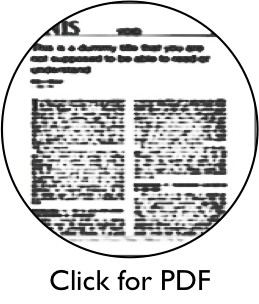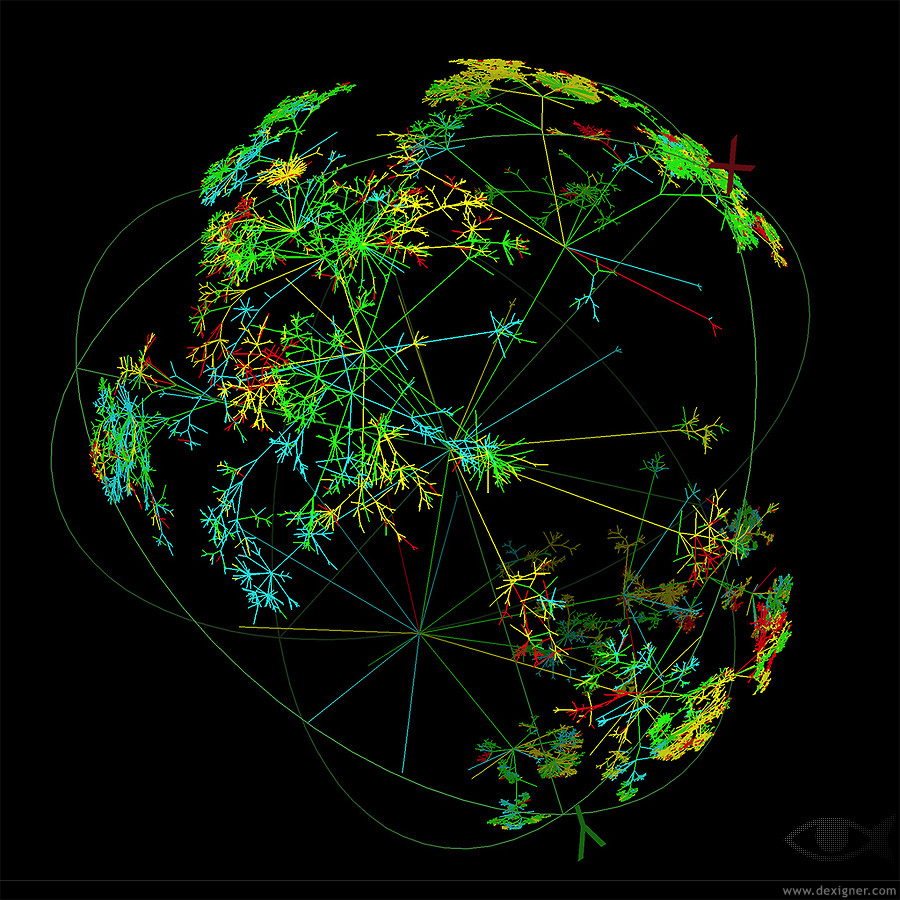
Tweet
December 16, 2014
Proceedings of the Natural Institute of Science | Volume 1 | SOFD 9
A child’s Christmas in the surveillance state: Cultural critique, Elf on a Shelf
Miss L. Toe1, Shirley Knot1
1 - Department of Checking Twice Studies, South Pole U, South Pole or Somewhere Close (depending on season and state of magnetic fields)

Abstract: The Elf on the Shelf is a recently emergent Christmas “tradition” that has produced internet chatter, family shenanigans, and, of course, marketing schemes. Here, we analyze Santa’s newest little helper from a critical cultural perspective. Given fears about the changes technology has wrought, The Elf on the Shelf is an overt attempt to appeal to “traditional” practices that predate our perceived collective technological disconnection. However, we argue that the Elf on the Shelf, as non-digital as he (or she) appears to be, still functions as a medium through which children are socialized into accepting and expecting a high level of surveillance. Specifically, we characterize the Elf as a technology within a larger control apparatus, the Santanic techno-ontology; we argue that the Elf serves as a medium by which that apparatus (re)creates docile subjects in a postmodern surveillance state. The Elf is a perfect contemporary mechanism for such because it is ubiquitous, modular, networked, and mobile--all aspects of subject-(re)producing technologies in a digital age.
***************************************************************************************
As Marx said, every child knows that a social formation which did not reproduce the conditions of production at the same time as it produced would not last a year. The ultimate condition of production is therefore the reproduction of the conditions of production.
--Louis Althusser[1]
The Derridean absent presence, or “trace,” of Santa Claus, with his distant home in the North Pole and his omniscient eye on girls and boys all over the world, has long been an aspect of the Christmas cultural apparatus. In the same way that the Medieval Christian practice of confession evolved into the markedly modern practice of Freudian talk therapy (Foucault 1977), Santa has morphed from a Christian saint, bound by the docile-subject-producing institution of the Church with the promise of heaven and the threat of hell, through a modern industrial trope of a producer-subject whose bad deeds are paid with coal, into a postmodern Santa: a secular, media-and-market-powered, all-seeing entity who (re)produces the consumer subject for whom “heaven” is unlimited and immediate access to the buyable, pre-produced product. Santa’s own magical technologies are entities which extend his power and create an apparatus we will call a Santanic techno-ontology: the magical sleigh and the eight flying reindeer, the long and powerful list, Rudolph’s beacon nose[2], Santa’s own nose-finger assemblage (which sends him back up chimneys), his bottomless bag, and, most importantly, his elves. The elves are “little helpers,” Santa’s devices that help him manage the constraints of time and space.
A powerful new aspect of the contemporary Santanic techno-ontology is, of course, its reliance on non-centralized, mobile, and modular media technologies. In the new configuration, the Elf on the Shelf is the key strategic piece in the apparatus. During the high modern industrial period, Santa’s elves moved from the artisan “workshop” to a factory model, a floorplan reminiscent of Jeremy Bentham’s “panopticon” prison made famous by Foucault (1977) with Santa as all-seeing foreman (see Figure 1). Both in the case of elf labor and child “good” behavior, the possibility of Santa’s gaze, or Santa’s absent-presence, was actually more important and productive than his embodied presence.

That same Santanic present-absence extended and continues to extend into the lives of boys and girls around the world, with its productive power applied to “nice”ness, good behavior, rather than the manufacture of toys. During the industrial age, the extension of Santa into the homes of children occured via an immaterial technology that borrowed its power from the then-dominant ideological state apparatus, the church (Althusser 1970)[3]. Santa was able to see into children’s lives much like a ubiquitous and omniscient God, and his all-powerful list (which he always checked twice) was the holy text, the prime Santanic media technology.
But, as many argue[4], God and the book are dead. The market and its tangibles are now the all-powerful and unquestionably accepted “real,” and children have gradually stopped responding to an absent presence as any part of that reality. (i.e. “Santa can’t see me unless he uses some instrument as his eye.”) Nowadays, in the post-industrial, postmodern age of the networked, mobile workplace, the North Pole headquarters is only a node in a large distributed network (Figure 2), and its apparatus operates to produce information (and not just information--intelligence) rather than toys. The conversion of Santa’s workshop into a producer of information/intelligence maintains Santa’s power within a Western context and realigns the Santanic techno-ontology with contemporary Western values and the primary goal of the neoliberal West’s economic production: data. These data are produced, of course, by technologies appropriated from military[5] purposes--satellites, unmanned aircraft, and the like--with the power to see into our daily lives and make machine-sense of our daily behaviors. Little girls and boys are sorted into discrete groups according to the operative Santanic binary, “naughty” and “nice” and thus operationalized as actionables in the Christmas cultural apparatus.

The nodes in the network described above are Santa’s little mobile devices, or, if you prefer, Santa’s little drones: Elves on Shelves. “I watch and report on all you do,” says the Elf, “the word will get out if you broke a rule!” (Aebersold & Bell 2009), establishing the network’s prime directive, behavior modification, in the book associated with the toy--the device’s ostensible user’s manual. Aside from surveillance and the conversion of behavior into naughty/nice binary, the Elf’s other job is to gather information about what consumer products the child would like to receive for Christmas, an example of the well-matched and often parallel productive actions of the (modern, stable, transcendent) market and the (postmodern, fluid, emergent/immanent) control society[6][7].
While the pre-modern and modern Santanic apparatus involved technologies of punishment, most notably the evil elf Krampus and lumps of coal, the postmodern contemporary Santanic techno-ontology requires no such costly executive functions thanks to a strategic deployment of technologies of lateral surveillance and the already stable pre-exisitng networks of market and empire (Figure 3). The Elf on the Shelf as an interactive medium (re)produces children as docile subjects who do “the work of being watched” or “submit to comprehensive surveillance in response to offers of convenience or participation” (Andrejevic 2002), here the promise of being marked “nice” and receiving their desired Christmas presents.

The related mechanism of lateral surveillance enlists friends and family members as extensions of the surveillance apparatus, asking them to prevent the Elf from being touched and to help others be “good” (read: docile, under control, safe) “little girls and boys” (read: proto-subjects of the surveillance state). The nice list thusly composed renders the Santanic techno-ontology a set of conditions that (re)produces the model subject of the contemporary, wired, adequately digitized surveillance state. They are subjects prepared to live in “the age of the drone” (Packer & Reeves 2013), accustomed to action at a distance, especially. They are “nice” consumers, accustomed to being given what they want (and, ultimately, told what they want by algorithms) in exchange for producing data for the data-eating, information-making, stuff-delivering consumer-control apparatus.
Conclusion
Here we have considered the Elf on the Shelf as a networked media technology in a very specific Christmas cultural apparatus: the Santanic techno-ontology, which functions to (re)produce or co-produce a contemporary surveillance state. We have certainly not exhausted the potential for critique of the Elf on the Shelf phenomenon, however. Further exploration of the topic should include, among other things, a fleshing-out of the Elf network in terms of mobility and child behavior surveillance in non-home spaces (schools, supermarkets, etc.) and via non-Elf media (apps, games), exploration of how the Elf extends neoliberal ideological territories and empire, and, of course, a Marxist historiographical treatment of Elf labor. Though we do not wish to jump to conclusions about the implications of all of these fecund fields of analysis, we predict that the main premise and reason for such critique will continue to be supported by extended inquiry: if it seems like innocent fun, it is probably oppressive and/or pretty much downright evil.
Footnotes
[1] Ideology and Ideological State Apparatuses (Notes towards an Investigation) (1971). Lenin and Philosophy and Other Essays. Monthly Review Press. [Return to main text]
[2] which is arguably a technology to be included in the genealogy of the telegraph (Carey 1989) [Return to main text]
[3] Althusser goes on to argue that the new dominant state apparatus [was] the school, and Elves on Shelves are a case in point, actively marketed to and deployed in schools. [Return to main text]
[4] and some of us know [Return to main text]
[5] We will not devote space here to the Elf’s military history, but we will point readers to the large literature of Tolkien Studies as a starting point for learning more about the Shelf Elf’s warlike cousins. [Return to main text]
[6] See our call for further analysis with a Marxist theoretical framework in the conclusion. [Return to main text]
[7] See Gilles Deleuze. Though we do not explicitly cite him here, he is everywhere, and we are obligated to use verbiage that he coined in order to let you know that we know that he exists. Same thing with Heidegger, for that matter. Heidegger is ALWAYS WATCHING, much like the Elf on the Shelf. [Return to main text]

Proceedings of the Natural Institute of Science (PNIS) by https://instsci.org/ is licensed under a Creative Commons Attribution-ShareAlike 4.0 International License.